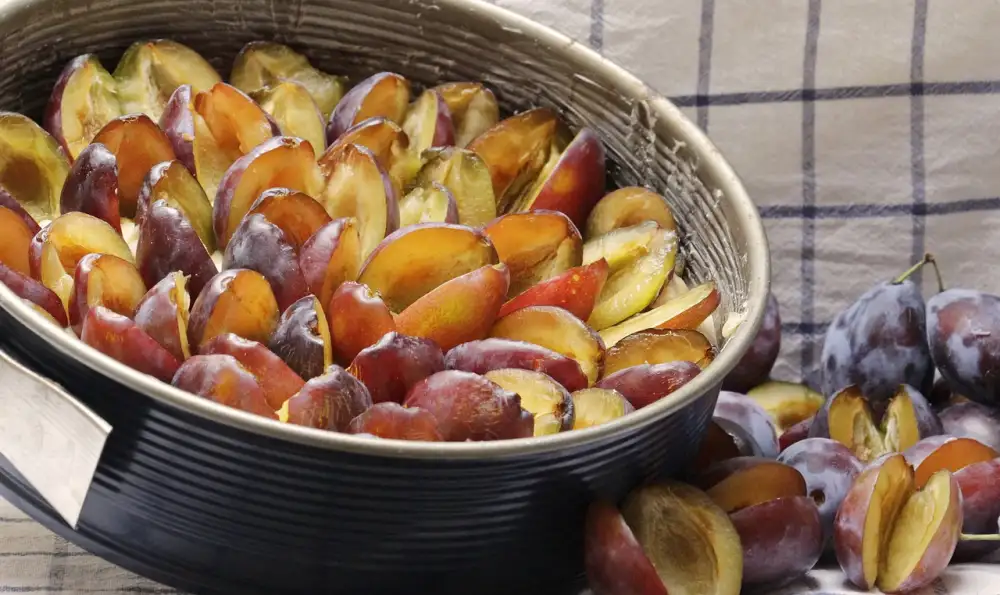Ultimate Guide: How to Make Batter for Baking and Frying Like a Pro

Batter is a versatile mixture used in both baking and frying to create a crispy and delicious coating for various foods. It acts as a protective layer that seals in moisture while adding flavor and texture. Understanding how to make the perfect batter is essential for achieving professional results in your cooking endeavors. Whether you're preparing light and fluffy pancakes or crispy fried chicken, mastering the art of batter making will elevate your culinary skills to the next level.
Gather Ingredients and Equipment
To make a successful batter for baking or frying, it is essential to gather all the necessary ingredients and equipment before starting. For a basic batter, you will need flour, salt, baking powder (for baking), and spices or herbs for flavor. Wet ingredients typically include eggs, milk, water, or other liquids depending on the recipe. Additionally, you will need mixing bowls, a whisk or fork for stirring, measuring cups and spoons for accuracy, and a sifter to ensure smooth consistency in your batter. Having all these items ready will help streamline the batter-making process and ensure consistent results in your cooking endeavors.
Mix Dry Ingredients
When making batter for baking or frying, start by combining the dry ingredients in a mixing bowl. This typically includes flour, salt, baking powder, and any other dry seasonings or spices the recipe calls for. Whisking the dry ingredients together helps distribute them evenly throughout the batter, ensuring a consistent flavor and texture. Make sure to break up any clumps of flour or baking powder to avoid pockets of dry ingredients in the final product. Mixing the dry ingredients thoroughly before adding the wet ingredients sets a solid foundation for a well-blended batter that will yield delicious results when cooked.
Add Wet Ingredients
To add wet ingredients to your batter, start by cracking eggs into a separate bowl to avoid shell fragments. Eggs provide structure and moisture to the batter. Beat the eggs lightly before incorporating them into the dry mixture. Next, slowly pour in milk or other liquids like water or buttermilk while stirring continuously. The liquid helps bind the dry ingredients together and create a smooth consistency. For flavor, you can also add melted butter, oil, or extracts like vanilla or almond. Gradually mix in the wet ingredients until fully combined, being careful not to overmix which can result in a tough texture.
Combine the Mixture
To combine the mixture, gently fold the wet ingredients into the dry ingredients using a spatula or whisk. Be careful not to overmix as this can result in a tough batter. The goal is to incorporate the wet and dry ingredients until just combined, leaving some lumps is okay. Overmixing can develop gluten in the batter, leading to a dense final product. A few small lumps are normal and will typically disappear during baking or frying.
Adjust Consistency if Needed
If your batter is too thick, gradually add small amounts of liquid (such as milk or water) while stirring continuously until you reach the desired consistency. On the other hand, if your batter is too thin, slowly incorporate more dry ingredients (flour or breadcrumbs) until it thickens up. The key is to make these adjustments gradually to avoid overcompensating and ending up with a batter that is either too runny or too thick. Remember, achieving the right consistency is crucial for the success of your baking or frying endeavors.
Let the Batter Rest
After mixing the batter, it is crucial to let it rest before using it for baking or frying. Allowing the batter to rest helps the ingredients fully combine and hydrate, resulting in a smoother texture and better flavor. This resting period also allows any gluten that may have developed during mixing to relax, leading to a lighter and crispier final product.
Depending on the recipe, the resting time can vary from 30 minutes to a few hours. Covering the batter with plastic wrap or a kitchen towel during this time will prevent it from drying out. Be sure to store it in a cool place away from direct sunlight.
By patiently letting the batter rest, you are giving it the opportunity to reach its full potential, ensuring that your baked or fried goods turn out perfectly every time.
Use the Batter for Baking or Frying
**Use the Batter for Baking or Frying**
Once your batter is ready, it's time to put it to use for baking or frying. For baking, preheat your oven to the specified temperature in the recipe. Grease your baking pan or muffin tin if needed. Pour the batter into the prepared pan, ensuring an even distribution.
For frying, heat oil in a deep fryer or heavy-bottomed pot to the recommended temperature. Dip your food items into the batter, ensuring they are fully coated before carefully placing them into the hot oil. Fry until golden brown and crispy, then remove and drain on paper towels.
Remember to not overcrowd the frying pan as this can lower the oil temperature and result in soggy food. With these tips in mind, you'll be able to create delicious baked goods or crispy fried treats using your homemade batter like a pro!
Tips for Perfect Batter Making
**Tips for Perfect Batter Making**
1. **Temperature Matters:** Ensure that your ingredients are at room temperature before mixing them together. Cold ingredients can prevent the batter from incorporating properly.
2. **Don't Overmix:** Be gentle when combining the wet and dry ingredients to avoid overmixing, which can result in a tough batter.
3. **Consistency is Key:** Aim for a smooth and lump-free consistency in your batter. Adjust with additional liquid or flour as needed to achieve the desired texture.
4. **Fry at the Right Temperature:** For frying, make sure the oil is at the correct temperature before adding the batter-coated items. Too hot, and they'll burn; too cold, and they'll absorb excess oil.
5. **Use Fresh Ingredients:** Fresh baking powder and yeast are essential for a successful batter that rises well during baking.
6. **Experiment with Flavors:** Don't be afraid to add herbs, spices, or other flavorings to your batter to create unique and delicious dishes.
7. **Keep it Light:** For a lighter batter, consider using carbonated water or beer instead of plain water in your recipe.
8. **Practice Makes Perfect:** Like any culinary skill, practice makes perfect when it comes to making batter. Don't get discouraged if your first attempt isn't flawless – keep trying!
By following these tips, you'll be well on your way to mastering the art of making perfect batters for all your baking and frying needs!
**Conclusion:**
Mastering the art of making batter is a fundamental skill for any aspiring baker or chef. Whether you're whipping up a batch of fluffy pancakes, crispy tempura, or light and airy cakes, understanding the basics of batter making is essential. By following the steps outlined in this guide, you can create batters that are perfectly balanced in texture and flavor.
Experiment with different recipes and variations to discover your favorite combinations. Remember that practice makes perfect, so don't be discouraged if your first attempts aren't flawless. With time and experience, you'll develop a keen eye for consistency and know-how to adjust your batter to suit different recipes.
So roll up your sleeves, gather your ingredients, and start mixing! With dedication and patience, you'll soon be creating delicious baked goods and fried treats like a seasoned pro. Happy baking and frying!
Published: 13. 04. 2024
Category: Food



